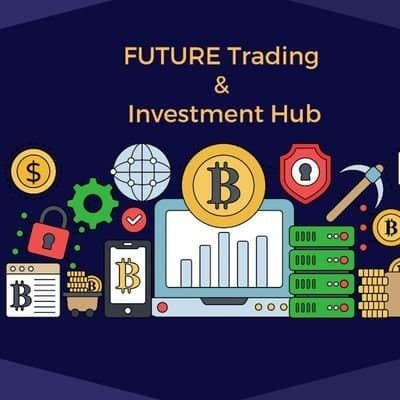SushiSwap price
in USD

About SushiSwap
Disclosures
SushiSwap risk
This material is for informational purposes only and is not exhaustive of all risks associated with trading SushiSwap. All crypto assets are risky, there are general risks in investing in SushiSwap. These include volatility risk, liquidity risk, demand risk, forking risk, cryptography risk, regulatory risk, concentration risk & cyber security risk. This is not intended to provide (i) investment advice or an investment recommendation; (ii) an offer or solicitation to buy, sell, or hold crypto assets; or (iii) financial, accounting, legal or tax advice. Profits may be subject to capital gains tax. You should carefully consider whether trading or holding crypto assets is suitable for you in light of your financial situation. Please review the Risk Summary for additional information.
Investment Risk
The performance of most crypto assets can be highly volatile, with their value dropping as quickly as it can rise. You should be prepared to lose all the money you invest in crypto assets.
Lack of Protections
Crypto assets are largely unregulated and neither the Financial Services Compensation Scheme (FSCS) nor the Financial Ombudsman Service (FOS) will protect you in the event something goes wrong with your crypto asset investments.
Liquidity Risk
There is no guarantee that investments in crypto assets can be easily sold at any given time.
Complexity
Investments in crypto assets can be complex, making it difficult to understand the risks associated with the investment. You should do your own research before investing. If something sounds too good to be true, it probably is.
Concentration Risk
Don't put all your eggs in one basket. Putting all your money into a single type of investment is risky. Spreading your money across different investments makes you less dependent on anyone to do well. A good rule of thumb is not to invest more than 10% of your money in high-risk investments.
Five questions to ask yourself
- Am I comfortable with the level of risk? Can I afford to lose my money?
- Do I understand the investment and could I get my money out easily?
- Are my investments regulated?
- Am I protected if the investment provider or my adviser goes out of business?
- Should I get financial advice?
DeFi tokens
Decentralised Finance ("DeFi") tokens are crypto assets built on decentralised blockchain technology for financial applications or protocols. Risks linked to DeFi tokens include:
Enterprise Risk
Interactions between multiple DeFi protocols create a situation where a vulnerability or breakdown in one protocol can trigger a cascading effect, affecting other interconnected platforms.
Technology Risk
DeFi protocols frequently depend on external data sources or oracles, and any tampering or inaccuracies in these data streams can result in a lack of trust and reliability in the protocols.
Regulatory Risk
Governments and regulatory bodies around the world can introduce new regulations or ban certain aspects of the cryptocurrency market, affecting its legality and viability, which could affect token liquidity and/or value.
Legal Risk
Certain tokens may be used for operating a decentralised exchange platform which may contain additional risks:
- The platform may allow users to participate who have not been vetted or verified and therefore expose the possibility that users are interacting with sanctioned entities.
- The platform may be accessible in jurisdictions where some or all the exchange activity should be regulated. If a local regulator deemed the platform activity to be in breach of local regulation, they may request cessation or termination of the service which could affect token liquidity and/or value.
Market Risk
Given their novelty, the evolving technology involved and lack traditional asset structure, valuing crypto assets can be very difficult or impossible. This means valuations are determined by demand that is at risk of manipulation in various ways.
SushiSwap’s price performance
SushiSwap on socials
Guides

SushiSwap on OKX Learn
SushiSwap FAQ
Some common factors include market demand and supply dynamics, overall sentiment towards cryptocurrencies, trading volume on exchanges, developments and updates related to the SushiSwap platform, partnerships, regulatory announcements, and broader market trends.
With SushiSwap, there are several ways to potentially generate rewards. One method is providing liquidity to the platform’s liquidity pools, earning a portion of the trading fees generated by SushiSwap users. Alternatively, users can participate in yield farming, which involves staking their assets to earn additional tokens as rewards.
Easily buy SUSHI tokens on the OKX cryptocurrency platform. Available trading pairs in the OKX spot trading terminal include SUSHI/USDT and SUSHI/USDC.
You can also buy SUSHI with over 99 fiat currencies by selecting the "Express buy" option. Other popular crypto tokens, such as Bitcoin (BTC), Ethereum (ETH), Tether (USDT), and USD Coin (USDC), are also available.
Additionally, you can swap your existing cryptocurrencies, including XRP (XRP), Cardano (ADA), Solana (SOL), and Chainlink (LINK), for SUSHI with zero fees and no price slippage by using OKX Convert.
To view the estimated real-time conversion prices between fiat currencies, such as the USD, EUR, GBP, and others, into SUSHI, visit the OKX Crypto Converter Calculator. OKX's high-liquidity crypto exchange ensures the best prices for your crypto purchases.
Dive deeper into SushiSwap
Decentralized finance (DeFi) platforms offering innovative solutions are gaining prominence as the sector continues to evolve. SushiSwap, an exemplar of this dynamic, has surged in popularity with its unique features and community-driven approach.
Primarily a decentralized exchange (DEX), SushiSwap also facilitates the automated trading of cryptocurrency assets using smart contracts built on the Ethereum blockchain.
What is SushiSwap
SushiSwap is a DEX that operates on the Ethereum blockchain. As an automated market maker (AMM), SushiSwap enables users to trade cryptocurrencies against liquidity pools by interacting with smart contracts on the platform. The platform's native token, SUSHI, is integral to its operations, serving purposes such as governance and providing rewards within the SushiSwap ecosystem.
The SushiSwap team
The development of SushiSwap was led by Chef Nomi, who chose to remain anonymous. Chef Nomi faced controversy when $14 million worth of SUSHI was removed from the project's treasury, only to be returned later.
After Chef Nomi's departure, temporary control of SushiSwap was entrusted to Sam Bankman-Fried, the former CEO of FTX exchange. Eventually, control was handed over to a group of community-selected individuals.
Notably, SushiSwap announced a merger with Yearn Finance, led by Andre Cronje, indicating a collaborative effort to harness the strengths of both platforms.
How does SushiSwap work
SushiSwap operates through a set of smart contracts on the Ethereum blockchain, facilitating direct peer-to-peer (P2P) trading and providing liquidity pools users can contribute to. The platform consists of the SushiSwap exchange, allowing traders to swap tokens directly from their wallets, as well as SUSHI tokens, which are earned by liquidity providers and can be staked for rewards and participation in governance.
SUSHI price and tokenomics
SUSHI is an ERC-20 token with a total supply of 250 million, expected to be fully minted by the end of 2023. SUSHI holders can lock their tokens in SushiSwap’s liquidity pools, earning SushiSwap Liquidity Provider (SLP) tokens in return. The liquidity pools collect a 0.25 percent fee from trades, contributing to the growth of the pool’s funds and increasing the value of SLP tokens.
SUSHI use cases
SUSHI serves multiple essential functions within the SushiSwap ecosystem. As the governance token, it empowers holders to actively participate in voting on proposals that shape the platform's future. Additionally, users can stake their SUSHI to earn a share of trading fees, incentivizing them to contribute liquidity to the platform. Moreover, stakers are eligible to receive a percentage of every NFT trade conducted on SushiSwap's NFT marketplace, further enhancing their earning potential and engagement within the ecosystem.
Distribution of SUSHI
SUSHI tokens were distributed as follows:
- 60 percent: Set aside for the initial liquidity mining program
- 20 percent: Held by the SushiSwap treasury
- 10 percent: Given to the team and advisors
- 10 percent: Reserved for community grants
SushiSwap’s future expansion plans
SushiSwap currently supports only Ethereum-based tokens, but the team has ambitious plans to expand to other blockchains in the future. The team is also actively developing new features for the exchange, with lending and borrowing, derivatives trading, and non-fungible token (NFT) trading among the exciting additions in progress.
Disclaimer
OKX does not provide investment or asset recommendations. You should carefully consider whether trading or holding digital assets is suitable for you in light of your financial condition. Please consult your legal/tax/investment professional for questions about your specific circumstances. For further details, please refer to our Terms of Use and Risk Warning. By using the third-party website ("TPW"), you accept that any use of the TPW will be subject to and governed by the terms of the TPW. Unless expressly stated in writing, OKX and its affiliates (“OKX”) are not in any way associated with the owner or operator of the TPW. You agree that OKX is not responsible or liable for any loss, damage and any other consequences arising from your use of the TPW. Please be aware that using a TPW may result in a loss or diminution of your assets. Product may not be available in all jurisdictions.







